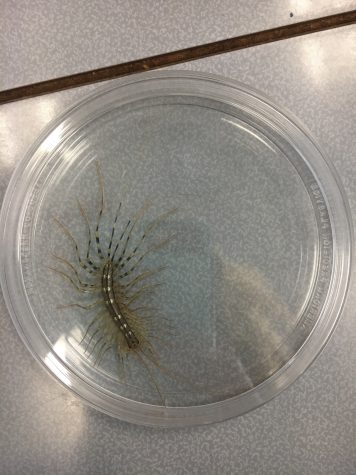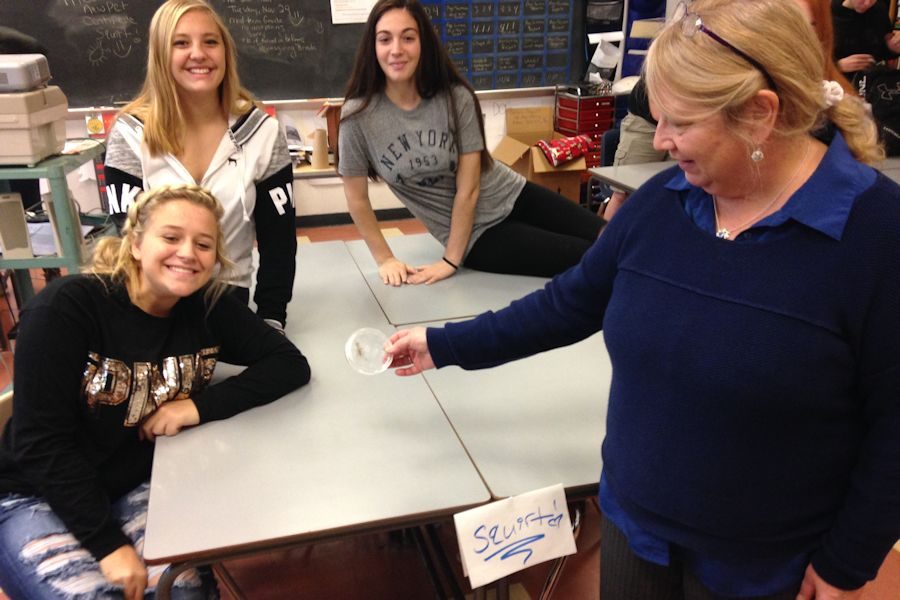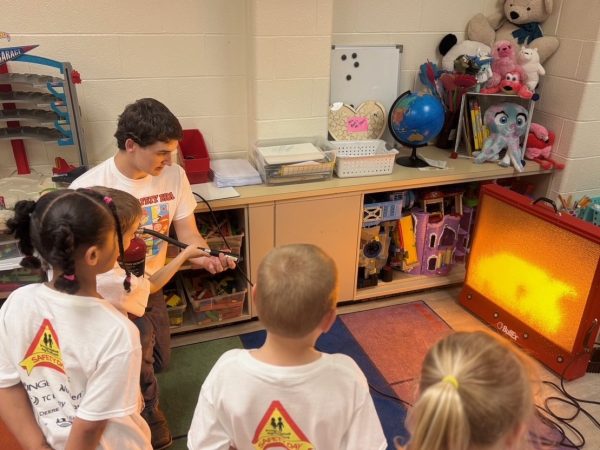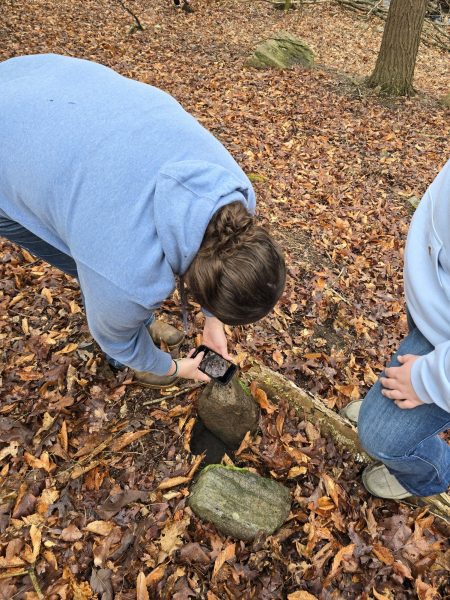A Bug’s Life: Creepy-Crawly Found in TAHS Restroom Leads to Entomology Lesson
A scary looking creepy-crawly spotted on the girls restroom floor led to a “teachable moment” for a group of TAHS students.
While the sight of one of these many legged creatures would cause most people to scream and run or just squish it dead, Tyrone teachers Kathy Holsinger and Tiffany Hoy challenged Hoy’s Natural Resources and Ecology students to do some entomological research to identify and study the large insect that was hanging out in the CTE woman’s bathroom.

In a frenzy, Sierra Robison and Skyler Thompson found a clean petri dish and ran to capture the mysterious creature. Squeals of excitement, and genuine concern, echoed off the walls and carried into the classroom as the young ladies returned with the creature in hand.
Hoy instructed the students to tape the container shut and pull out their Chromebooks to identify the bug, who was immediately named “Squirt” by its captors.
“Yes, in the walk back to the classroom the ladies named their new friend,” said Hoy.
The flurry continued as Holsinger summarized the information the students found about Squirt.
Turns out the scary looking creature was not dangerous at all.
The Scutigera Coleoptrata, commonly known as the house centipede, is actually beneficial to the area in which they live.
They are an insectivore; meaning they kill and eat other arthropods, such as insects and arachnids. They commonly consume bed bugs, roaches, termites and earwigs.
This led into a discussion on how students have recently seen an increase of these insects in their own houses and thought they should stomp them.
Using Inquiry Based Learning, the students quickly learned that because they consume other household pests, this insect should be saved and welcomed into houses and buildings. No harsh chemicals needed, which may hurt humans, pets or the environment.
However, they also learned that the house centipede can sting, but because they are such small and delicate creatures, their fangs cannot generally penetrate human skin. So while it can cause pain similar to a bee sting if they able to penetrate the skin, to most people they are harmless.
After studying their new friend for a while, Squirt was released in the corner of Mrs. Hoy’s office to ward off any insects who may try to find a home in the dark corners of her classroom.

As a second year Eagle Eye staff member and first year News Editor, junior Jaylon Beck seeks to expand Tyrone’s knowledge of their own FFA chapter....











